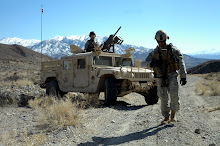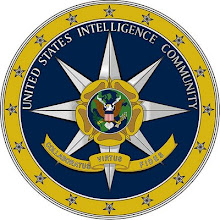By Steve Hammons
This year’s Super Bowl might show us examples of ESP in sports.
It is well known that constant practice in sports and “situational awareness” can combine to allow an athlete to perform “on instinct.”
Intense focus in the here and now in the middle of multiple rapidly-occurring events in a sport contest can combine to create an environment where athletes can experience “anomalous cognition,” meaning unusual or unconventional perception and awareness.
Many people have read about ESP in fields like intelligence (U.S. Project STAR GATE), police work and martial arts, but the frequency of anomalous cognition in sports may not be as widely recognized.
What do we mean by the word instinct? Some researchers believe that instincts are also related to a “sixth sense” that can transcend our normal view of perception. That is, we can perceive in ways in addition to, complementary to, though slightly different than, our five senses of sight, touch, hearing taste and smell.
Some researchers suspect that ESP and anomalous cognition are not unusual at all. Rather, this is a natural part of human consciousness. It is not paranormal – it is normal. We might even call it “complementary cognition” or “integrative cognition.”
TWO RECON PIONEERS
When the book "Golf in the Kingdom" by Michael Murphy was published in 1972, many people interested in sports had not fully considered the impact of unconventional consciousness in athletics. His 1992 book "The Future of the Body" also addresses related subjects.
Murphy was co-founder of the Esalen Institute in Big Sur, California, where many elements of the human potential movement and expanded human consciousness were explored. In his younger days, Murphy had served in the U.S. Army as a psychology specialist.
The interests and perspectives of Murphy and many of his colleagues involved in the human potential movement were recently explored in the movie "The Men Who Stare at Goats."
A close associate of Murphy, president emeritus of the Esalen Institute George Leonard, also wrote the 1975 best-selling book related to ESP or expanded consciousness titled "The Ultimate Athlete."
A fifth-degree black belt in Akido himself, Leonard also explored these topics in the book "The Way of Aikido: Life Lessons from an American Sensei" (1999).
Leonard was a former Army Air Corps attack (fighter-bomber) pilot during WWII, serving in the southwest Pacific theater. He served as an analytical intelligence officer during the Korean War.
Leonard passed on recently, on Jan. 6, 2010.
STAR GATE AND SPORTS
Perhaps some of the most useful research on the topic of unconventional awareness and perception comes from the U.S. government joint effort known as Project STAR GATE, conducted during the 1970s, ‘80s and ‘90s.
This activity explored the ability of individuals to perceive things, places, information and situations from a remote location. They were able to gather important intelligence using only their consciousness.
In fact, a Navy SEAL officer wrote in a researcher paper for the Marine Corps War College that Project STAR GATE reflected a concept he called “transcendent warfare” – using advanced and emerging understanding in new ways.
Project STAR GATE activities also noted a key element that dovetails with sports and athletics: It seemed that the ESP impressions came to “remote viewers” through their bodies in a somewhat unconscious or subconscious way.
The people involved in the specific technique and protocol named “remote viewing” in Project STAR GATE found that letting impressions bubble up from their subconscious, and not using the conscious mind to try to interpret the information, led to more successful results.
They typically relaxed their minds and used various techniques to attempt to acquire information, then let their body express these perceptions by making sketches and notes in a spontaneous way.
Here we see the connection with sports and other activities. When the task at hand is partially a physical one, and we are using our body as much as, or more so than our conscious thinking mind, we may be more prone to accessing our sixth sense.
In this year’s Super Bowl, we might see examples of this if we look closely. And, if we open our minds to these possibilities, we might see expanded perception in our own lives.
These aspects of human development and education are relevant to not only sports and athletics, but a broad range of human activities in many fields.
And what is fun and interesting about the situation is the fact that we can look inside ourselves and explore these fascinating and transcendent elements of human consciousness, tapping into our own sixth sense.
Sunday, February 7, 2010
ESP in sports: Watch ‘sixth sense’ in Super Bowl
Sunday, November 15, 2009
'Goats’ movie helps us stare at human mind
By Steve Hammons
The new fact-based fiction movie "The Men Who Stare at Goats" deals with more than meets the eye. Or at least, we see some subjects touched on in quick and sometimes subtle ways that might trigger more thought.
In other scenes, certain topics are dealt with at length or even hit viewers between the eyes with a cinematic sledgehammer.
Incredibly funny parts of the movie are juxtaposed with the troubling, tragic and frightening.
Besides looking at the concepts of the First Earth Battalion and its real-life outside-the-box leader Army Lt. Col. Jim Channon (played by Jeff Bridges), we also get a glimpse at the Vietnam War years and post-Vietnam U.S. Army. These were dark and difficult times in the military and in America.
Yet, the 1960s and ´70s also brought forth the "human potential movement" which included a variety of touchy-feely human encounter activities, experimentation with mind-altering substances, a renewed interest in planet Earth and the natural environment, as well as the value of peace and human love.
From the troubled years after the Vietnam War to the conflicts in Iraq and Afghanistan, moviegoers are asked to consider some basic questions about human beings, the U.S. government and military, and even the forces of good versus "the dark side."
THE HUMAN MIND
The movie, and the book upon which it is based, bring together various subjects in ways that give us the opportunity to reflect further about the larger, deeper and more complex aspects of the real-life material.
For example, the research and operational activities of Project STAR GATE, probably the most widely-known U.S. remote viewing program, was not part of Channon's First Earth Battalion.
However, as indicated by the scene when George Clooney identifies the contents of a small closed box as "a man sitting in a chair," remote viewing did turn out to be a real and valid human skill. Generally speaking, it is a sub-type of ESP, but conducted according to specific and scientific research and operational protocols.
Remote viewing-type skills are related to what we call intuition, gut feelings, instincts and the sixth sense. We probably all have these abilities and can practice and develop them further.
Some of the Project STAR GATE personnel reportedly had quite excellent results at times.
On a separate topic, in the movie an entire Army outpost in Iraq is slipped a mind-altering substance, LSD, via the food and water. In fact, during Army and CIA research of LSD a couple of decades ago, unwitting troops, intelligence officers and civilians were reportedly given this substance to test its effects.
The dangers of this and other mind-altering substances are clearly demonstrated in one troubling and shocking scene. This danger is real and was an unfortunate result for many people in the '60s, '70s and beyond. In fact, certain mind-altering drugs continue to cause severe health, social and legal problems today.
The often valuable research into human consciousness, from the '60s to the present, has been marred in many cases by excess, ignorance, misuse and dangerous behavior. Defining, understanding and separating worthwhile and constructive approaches from stupid and destructive behavior continue to be a challenge now.
VICTORY WITHIN REACH
In the movie, we also get glimpses of the positive potential of human beings, our military and our society.
When the Jeff Bridges character has a near-death experience in Vietnam after being shot, we might wonder about the many reports of similar encounters that have been thoroughly researched and documented. And we might wonder what conclusions can be drawn from them.
The reverence for the Earth through various rituals by some of the characters can also be interpreted as a valid perspective that connects humans with Nature – and helps keep our feet on the ground as well as offering benefits to mental and spiritual health.
Mention in the movie of U.S. military humanitarian operations, peace operations, conflict resolution and similar activities might seem whimsical. However, these activities are now considered important parts of American foreign policy and important missions of the U.S. armed forces.
How fitting that the movie portrays some recent activities in Iraq and Afghanistan as being part of "the dark side."
"The Men Who Stare at Goats" is a funny, thought-provoking and very entertaining movie. It moves along quickly, but not like the rapid-fire pacing of a thriller. It is more like a gentle roller-coaster of humor and tragedy, action and more contemplative moments, with representations of good and evil, light and darkness.
Perhaps most importantly, the movie gives us insight into human nature at its best and worst. The lessons that can be learned from the film, and the stories upon which it is apparently loosely based, are probably more valuable than we might think.
Human consciousness is now changing and evolving in ways that might result in developments so positive that the goals of people like Col. Channon may finally be within reach.
Sunday, September 13, 2009
‘Integrative perception’ useful in health, media, defense
By Steve Hammons
Human perception is related to a broad range of important endeavors in fields like health, media, national defense and many other areas.
New developments in human perception and consciousness have the potential to help us make progress on these and other fronts.
Perception is personal and also social. It affects families, communities, countries and the international community. Our perception and understanding of ourselves are key in the areas noted above, and in many other ways.
We can take a look at a few examples to see how human perception affects progress in various activities and areas of interest.
HEALTH, HOLLYWOOD, DEFENSE
In the area of health, when well-known health-and-wellness expert and author Andrew Weil, M.D., appeared on CNN’s “Larry King Live” show on Sept. 10, he tried to apply his concepts of “integrative medicine” to the current national debate about health care.
Weil is the founder and director of the Arizona Center for Integrative Medicine at the University of Arizona College of Medicine in Tucson. He also serves as a professor of medicine and public health.
Another example is the new movie "Men Who Stare at Goats" starring George Clooney, Ewan McGregor, Kevin Spacey and Jeff Bridges. This film takes a look at innovative exploration of human consciousness within the U.S. military.
Although the movie and the book upon which it is based are reportedly slanted toward ridicule, many of these actual military and intelligence programs turned out to be quite valid and valuable. People who see the movie might become curious about these important and leading-edge efforts behind the scenes and explore them further.
As Navy Adm. Mike Mullen, current chairman of the Joint Chiefs of Staff, recently noted, the perception of the U.S. internationally is an area of concern, despite recent progress. “Strategic communication” is directly linked to human perception.
In fact, in a paper for the Marine Corps War College some years ago, a Navy SEAL officer studying there noted that “transcendent warfare” may be a useful concept that optimizes forward-leaning research and activities in human perception and consciousness.
INTEGRATIVE MEDICINE
When Dr. Weil was discussing his views of health with King on CNN, he explained some of the ideas of integrative medicine. The concept of integrative medicine is similar to “alternative medicine” or “complementary medicine.”
Weil believes that leading-edge health and wellness methods can be successfully integrated with conventional Western medicine.
In his discussion with King, he suggested that Americans should take more responsibility for their own health and wellness through healthier eating habits, more exercise and other common-sense approaches.
He stated that the over-reliance, in his view, on high-tech and expensive technological and pharmacological methods to treat health problems is unsustainable and not always particularly successful medically.
Weil seemed to be saying that physicians and health care providers, government officials crafting health care proposals and all of us should consider “integrative” viewpoints when thinking about human health and the administration of health care services.
According to the website of the Arizona Center for Integrative Medicine, “Since its inception, the Arizona Center for Integrative Medicine has focused its efforts on three domains: education, clinical care, and research—with the primary emphasis on education.” The site notes that the “Defining Principles of Integrative Medicine” include the following:
1) Patient and practitioner are partners in the healing process.
2) All factors that influence health, wellness, and disease are taken into consideration, including mind, spirit, and community, as well as the body.
3) Appropriate use of both conventional and alternative methods facilitates the body's innate healing response.
4) Effective interventions that are natural and less invasive should be used whenever possible.
5) Integrative medicine neither rejects conventional medicine nor accepts alternative therapies uncritically.
6) Good medicine is based in good science. It is inquiry-driven and open to new paradigms.
7) Alongside the concept of treatment, the broader concepts of health promotion and the prevention of illness are paramount.
8) Practitioners of integrative medicine should exemplify its principles and commit themselves to self-exploration and self-development.
MOVIES, MINDS, INTELLIGENCE
Related to Weil’s views, we might wonder if this integrative perspective or integrative consciousness is applicable in other areas.
Although Weil is now best-known for his work in health, wellness, nutrition and integrative medicine, his 1972 book "The Natural Mind" focused on human consciousness.
This actually dovetails with the movie "Men Who Stare at Goats" and the real-life activities by the U.S. defense and intelligence communities regarding human perception.
Discoveries in the last few decades about human perceptual abilities have found that our instincts, intuition, gut feelings, extrasensory perception (ESP) and “sixth sense” appear to be quite real and valid.
A longstanding effort by the U.S. defense and intelligence communities commonly referred to as Project STAR GATE found that humans have the capability to use “anomalous cognition” or unusual perception to gather intelligence. A specific protocol that was developed to do this came to be called “remote viewing.”
As our understanding about human perception and consciousness improves, it may become apparent that anomalous cognition is really not so unusual after all. Like the study of the health concepts of alternative and complementary medicine, the terms “alternative cognition” and “complementary cognition” might be more appropriate
In fact, taking note of Weil’s perspectives, we might consider the term “integrative cognition” or “integrative perception” to describe using the full range perceptual abilities and capabilities of human consciousness.
This also brings us back to Adm. Mullen’s concerns about important defense challenges in understanding our own internal and external national behavior and how this is perceived overseas.
By examining some of these innovative areas, we can surely make significant progress in many important fields to deal with challenges facing us today.
Monday, August 31, 2009
Movies on UFOs, other worlds help public acclimation?
By Steve Hammons
Recent, current and upcoming movies on stories related to UFOs, off-Earth civilizations and how humans fit into the situation continue to emerge from Hollywood.
A few examples include Aliens in the Attic, a kid-and-family-friendly movie released in July. Planet 51, scheduled to open in November, is an animated film and another one for kids and families.
The dark and introspective District 9 hit theatres in August and seemed to strike a chord with audiences and critics. The Fourth Kind, dealing with abductions of humans, takes the genre to a different level and audiences can check it out beginning this November.
James Cameron’s Avatar, due out in December, is already creating a buzz and promises to be visually exciting and thought-provoking.
And Curmudgeon Films recently obtained the rights to the story of an alleged Area 51 scientist for a movie project tentatively titled S-4: The Incredible True Story of Bob Lazar.
MEDIA AND ACCLIMATION
Are these films and many other creative works helping people prepare psychologically and emotionally for possible significant developments regarding UFOs and encounters with non-human and/or human-related beings from elsewhere?
To explore this question, we do not necessarily need to believe that UFOs and non-human or human-related civilizations are involved here on Earth. However, most people would say this is possible. Some people say it is probable. And others claim that it is a reality – a reality we need to deal with.
For people who are interested, the study of such situations is challenging. There seems to be much speculation and misinformation.
There also appear to be very interesting and well-researched documents, witness testimony and strong circumstantial indications that something along these lines has been going on.
In the mid-1950s, Walt Disney was reportedly approached by the U.S. Air Force and development of a documentary film about visitation of aliens to Earth was allegedly started. However, the plug was pulled on this project.
In subsequent decades, many “fictional” movies and TV shows did emerge that dealt with this topic in various ways. This trend continues now.
People can speculate about if this is an organized acclimation effort to prepare Americans and people around the world for an unconventional situation, or if it is just the creativity, imagination and money-making sense of the movie and TV businesses.
Either way, it is probably true that kids, teens and adults are today more prepared for the possibility or reality of the existence of non-human or human-related extraterrestrials, beings from other dimensions or similar kinds of unconventional scenarios because of movies, TV shows and books on these subjects.
SPECIAL SCENARIOS
Much has been written and discussed about the so-called “Majestic” or “MJ-12” group of experts reportedly formed after the Roswell incident.
Fewer people probably have heard of the alleged U.S. Army Counterintelligence Corps “Interplanetary Phenomenon Unit (IPU),” which, it is claimed, may have been active even before the Roswell case, due to previous intelligence about unconventional situations.
Reports of activities like these could indicate that, as part of dealing with a complex scenario, U.S. leaders realized that the American people would need to be informed and prepared in some way that did not cause undue social or other problems.
Indirect methods such as movies, TV programs, books and other creative endeavors would naturally be resources that could accomplish this. The close bonds formed between Hollywood and the defense community during World War II could have been leveraged to deal with this new challenge.
It will be interesting to see where this goes.
Some of the recent and upcoming movies, like those before them, take a good, hard look not only at “aliens,” but also at ourselves – the human race. This seems to be a necessary part of acclimation about how we might interact with or respond to encounters with others.
The scenario of human contact with more advanced civilizations is often compared to the experience of Native American Indians who encountered the technologically more advanced Europeans beginning in the 1500s until the “conquest” of what is now the western U.S. in the late 1800s.
The Native American Indian tribes, cultures and civilizations suffered quite a bit from this interaction. This is an understatement.
Would this happen to our own human cultures in the face of a technologically-superior race from elsewhere? This is a question that has been carefully considered by many researchers.
BE PREPARED
Preparing ourselves for the possibility or reality of contact like this seems to be wise. Being prepared for possible situations of many kinds is usually a good idea. This can enhance safety and the chances for good outcomes.
Movies, TV, books and other kinds of creative activities have an important part to play in these efforts. They help us explore and consider various possibilities. They prepare us psychologically, emotionally and spiritually, as well as forming common perceptions among us that might be helpful.
Of course, there are other unusual and thought-provoking subjects that may be both related to, and somewhat independent of, the topics of UFOs and visitors.
These include leading-edge thoughts and scientific research into teleportation, time travel, anti-gravity methodologies, advanced human perception, life after death and similar kinds of subjects. Plenty of movies and creative works have tackled these topics too, often with great results.
I like to think that my own two novels, Mission Into Light and the sequel Light’s Hand, as well as the subsequent movie screenplay and two TV pilot scripts based on them, help move the ball forward in these areas.
The books tell the story of the “Joint Reconnaissance Study Group,” a San Diego-based U.S. joint-military service and intelligence team of ten women and men who are tasked with conducting special research and operations. The novels bring readers and viewers into the inner workings of this special activities group as they explore different kinds of mysterious phenomena and the connections between them.
My adaptation of the books to a movie screenplay and a one-hour TV pilot, both closely based on the novels, might also spark interest along the way.
A two-hour TV pilot written by two other screenwriters, based more loosely on my novels, is also a good example of using the TV media to entertain and inform. With the help and guidance from a highly-qualified science advisor, we made sure that our concepts were sound.
Maybe one day these projects will make it to the big or small screen. It would be rewarding to think that these works could contribute not only to the body of worthwhile film and TV projects, but also help somewhat in the larger situations we might face.
Friday, August 14, 2009
Healthy, safe living should be part of national discussion
Monday, July 13, 2009
ESP, remote viewing actually ‘complementary cognition?’
By Steve Hammons
The term “anomalous cognition” has come to mean something similar to what has often been called the “sixth sense.” These concepts are also linked with names for this phenomena such as extrasensory perception (ESP) and remote viewing.
However, is it true that certain kinds of perception are actually “anomalous,” that is, unusual or out of the ordinary?
It may be that the sixth sense is actually a very natural, normal and common kind of perception that we all experience on a regular basis. We may not recognize it as such because we filter those perceptions through our conscious and logical thinking brain.
Or, maybe we just consider these perceptions as hunches, gut feelings, instincts or intuition that we may or may not pay much attention to.
It might be more accurate and constructive to call this kind of perception “alternative cognition” or “complementary cognition.” This is similar to ideas of alternative medicine and complementary medicine.
NORMAL AND NATURAL
We might think of alternative cognition or complementary cognition as just another perceptual resource to go along with our other five senses of sight, hearing, touch, taste and smell as well as our emotions, feelings, dreams, imaginations and thinking brain.
In fact, maybe we will discover that there are more than these modes of perception. Maybe we have the ability to perceive in ways that can be further identified and specified.
There are also joint perceptions that involve using more than one sense or perceptual resource simultaneously. Integrating our sixth sense with the other five and other inner experiences may also be helpful, as well as very natural and normal.
Complementary cognition is probably something all humans, and probably many animals, possess as a natural part of our awareness.
However, this does not mean that all of us utilize this kind of perception in equal measure.
For example, remote viewing refers to some specific methods developed by the U.S. military and intelligence communities in Project STAR GATE during the 1970s, ‘80s and ‘90s. People were selected to be remote viewers in these efforts because they were believed to have better than average or quite good abilities in this area.
These abilities were then scientifically tested, verified, measured and explored by Project STAR GATE personnel.
Are these skills based on elements like personal experiences, training and practice, genetics or psychological traits? All of these factors, and maybe more, probably play a part in the abilities of a particular person.
In addition, the purpose or importance of the alternative or complementary cognition experience might be an important factor. Is it being used as part of an important secret mission, for personal safety and survival, to find a missing child, to catch a dangerous criminal?
Would these situations somehow contribute to the availability or accuracy of complementary cognition experiences compared to a purpose that is less important?
LEADING-EDGE RESOURCE
As we continue to learn more about our sixth sense, ESP, remote viewing, anomalous cognition, alternative/complementary cognition or whatever we might choose to call it, we will probably find answers to these questions.
Scientific research during the Project STAR GATE years resulted in large amounts of useful data that continue to be very helpful in our understanding of this aspect of human consciousness.
In addition to the scientific exploration and measurement of this human ability, it was applied to operational activities involved with U.S. national security, often with significantly successful results.
In fact, a Navy SEAL officer suggested in a research paper for his studies at the Marine Corps War College that remote viewing can be an example of what he called “transcendent warfare.” He suggested that using state-of-the-art and leading-edge emerging knowledge about human consciousness can be an important part of U.S. national security activities.
Subsequent concepts that built on the SEAL officer’s idea of transcendent warfare included the term “transcendent power” which is complementary to diplomatic and military soft power, hard power and what has been called smart power.
Taking the transcendent power idea further, we might discover that it and complementary cognition can be applied to a wide range of efforts and goals including economic prosperity, scientific progress, medical discoveries, human development, international peace operations, resolution of social problems, natural resources conservation and many other important current challenges.
When we begin to understand that alternative and complementary cognition is a natural part being human, we may find that we can make accelerated progress on many levels.
Tuesday, July 7, 2009
Another view of UFO disclosure: Look within
By Steve Hammons
We seem to hear and read quite a bit about "disclosure" in the media nowadays in reference to unconventional and unidentified flying objects (UFOs).
Some people say we must lobby for the release of government-held information so that the American and international public can understand what, if anything, is going on. Are there important new discoveries? Are there threats to the human race? How might the government be handling unconventional scenarios?
Actually, quite a bit of disclosure has already taken place. By doing a reasonable amount of research, any average person can get a very good feel for what may be going on.
Sometimes, things are spelled out quite clearly. Sometimes we have to read between the lines.
GRASSROOTS UNDERSTANDING
There seems to be an assumption that somewhere within the secret groups of, or associated with the U.S. government, there exists a comprehensive understanding of the overall situation when it comes to UFOs, contact with other worlds or dimensions and various kinds of mysterious phenomena.
Although there undoubtedly is classified information that could shed light on some of these topics, specific facts about UFO crashes and other activities may not provide a truly insightful understanding of the larger picture.
In fact, we may not see the forest for the trees. Or, layers of deception could surround apparent facts and situations.
What makes us believe that politicians and those from the military, intelligence and scientific fields have the necessary perspectives to fully understand the real whole situation? Some may and some may not.
Undoubtedly, many or most have tried to do their duty to the best of their ability. Even so, the probable compartmentalization found within secret programs often prevents people – even people on the "inside" – from seeing the bigger and deeper realities involved.
One view is that when more understanding about unconventional situations emerges, it may be through a "grassroots" method. That is, it might not come from the top down – from Washington, D.C. – down to the rest of us. New understanding may come from average people who, through one way or another, make discoveries within themselves about what may be going on.
LARGER ECOSYSTEM
Some researchers have indicated that many unconventional phenomena may be part of our natural environment, part of Nature, part of an ecosystem that is more complex than we may have imagined.
Within this larger ecosystem, humans may not be the most technologically, intellectually or spiritually advanced species involved.
However, the human race may hold some key to ongoing developments in the next stages of an unfolding story. What is our role? Will that role evolve? Are we being oriented and acclimated about this new role our species plays in the larger environment?
Another element to consider is that our situation with regard to unconventional phenomena may be a mystery by nature. That is, even extraterrestrial and/or extra-dimensional visitors may not understand the whole story, let alone U.S. government officials.
This universe or multiverse of ours may be an ever-unfolding mystery. There may be no final answers. There may be no secret government files that will explain it all.
HUMAN CONSCIOUSNESS
Through classified investigations, we may have learned about things like UFOs and exotic physics. These might have led to mind-boggling spacecraft and advanced technologies that remain secret. No doubt, these could be interesting and potentially very helpful.
But is that really where the important answers lie?
Maybe we should also look to the human heart, human kindness, human passion and compassion, human creativity and beauty in music, the arts and other endeavors. Maybe we should look to human decency, to our moral compasses and to human consciousness.
Research into human consciousness, including activities of the U.S. government, has yielded significant results that we have heard plenty about: ESP, remote viewing and similar phenomena.
Maybe this type of research is a good jumping off point for valuable discoveries. Maybe this is the path that will lead us through the mysteries of unconventional phenomena of many kinds, including the UFO phenomena.
And what might we find on that path? Possibly deeper, stranger and even more wonderful mysteries.



































































































































































































